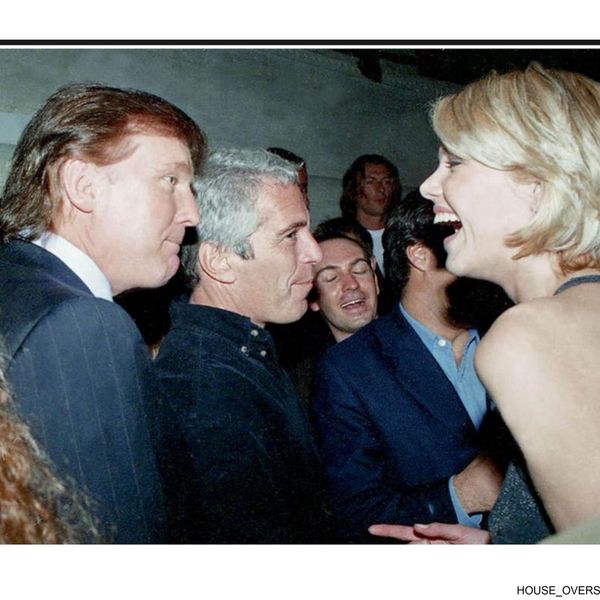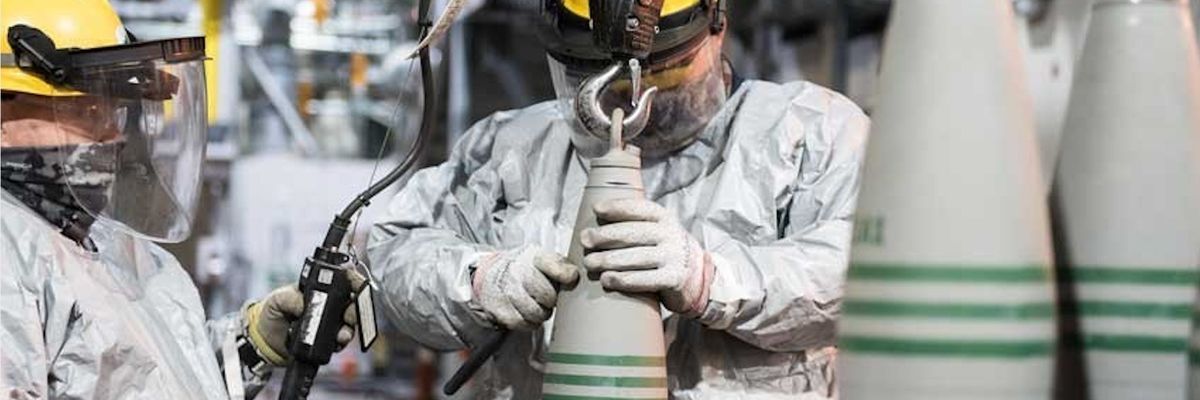The White House announced Friday that the United States has destroyed what remains of its once-massive military chemical weapons arsenal, while vowing to "prevent the stockpiling, production, and use" of the internationally banned weapons of mass destruction.
"For more than 30 years, the United States has worked tirelessly to eliminate our chemical weapons stockpile. Today, I am proud to announce that the United States has safely destroyed the final munition in that stockpile—bringing us one step closer to a world free from the horrors of chemical weapons," President Joe Biden said in a statement.
"Successive administrations have determined that these weapons should never again be developed or deployed," the president continued, "and this accomplishment not only makes good on our long-standing commitment under the Chemical Weapons Convention, it marks the first time an international body has verified destruction of an entire category of declared weapons of mass destruction."
While the U.S. military no longer has a chemical stockpile, tear gas—a chemical weapon banned in war—remains an integral part of law enforcement crowd suppression arsenals.
"Today—as we mark this significant milestone—we must also renew our commitment to forging a future free from chemical weapons," Biden said. "I continue to encourage the remaining nations to join the Chemical Weapons Convention so that the global ban on chemical weapons can reach its fullest potential."
Under the treaty, the U.S. committed to destroying its chemical arsenal by 2007; that deadline was later extended to 2012.
The Organization for the Prohibition of Chemical Weapons (OPCW) confirmed Friday that "all declared chemical weapons stockpiles" around the world have now been "verified as irreversibly destroyed."
"The end of the destruction of all declared chemical weapons stockpiles is an important milestone for the organization. It is a critical step towards achieving its mission to permanently eliminate all chemical weapons," OPCW Director-General Fernando Arias said in a statement.
"Yet, more challenges lie ahead of us, which require the international community's continued attention," Arias added. "Four countries have yet to join the convention. Abandoned and old chemical weapons still need to be recovered and destroyed."
Egypt, Israel, North Korea, and South Sudan are not party to the Chemical Weapons Convention, which took effect in 1997.
As The New York Times reported Thursay:
The American stockpile, built up over generations, was shocking in its scale: Cluster bombs and landmines filled with nerve agent. Artillery shells that could blanket whole forests with a blistering mustard fog. Tanks full of poison that could be loaded on jets and sprayed on targets below.
They were a class of weapons deemed so inhumane that their use was condemned after World War I, but even so, the United States and other powers continued to develop and amass them. Some held deadlier versions of the chlorine and mustard agents made infamous in the trenches of the Western Front. Others held nerve agents developed later, like VX and Sarin, that are lethal even in tiny quantities.
American armed forces are not known to have used lethal chemical weapons in battle since 1918, though during the Vietnam War they used herbicides like Agent Orange that were harmful to humans.
The United States once also had a sprawling germ warfare and biological weapons program; those weapons were destroyed in the 1970s.
Even after the Cold War ended, the United States was drafting plans for the possible use of chemical weapons. In service of U.S. global hegemony, then-Undersecretary of Defense Paul Wolfowitz and his deputy Scooter Libby authored a 1992 strategy plan, "Defense Policy Guidance," that called for possible preemptive nuclear, biological, or chemical warfare against countries that potentially posed threats to American dominance—even if they did not have or use weapons of mass destruction.
"Honestly, I never thought this day would come," Irene Kornelly, who chairs the citizens' advisory commission that has overseen the destruction of U.S. chemical weapons at the Army's Pueblo Chemical Depot in Colorado for 30 years, told the Times. "The military didn't know if they could trust the people, and the people didn't know if they could trust the military."
As Kornelly spoke, the depot's manager blasted the rock band Europe's 1986 hit "The Final Countdown" and handed out red, white, and blue Bomb Pop popsicles.
"Most people today don't have a clue that this all happened—they never had to worry about it," Kornelly said. "And I think that's just as well."



